In the current era, the modern world, or the so-called Western world is taking credit for many developments in science and technology that are nothing but re-discoveries of ancient Indian scientific activities.
To put it differently, what the modern world is discovering are merely the re-discoveries and re-inventions based on the written scriptures of Ancient Indian Civilization.
These re-discoveries include in various scientific fields such as Astronomy, Astrology, Medical Science, Surgery, Ayurveda, Yoga, Theory Of Gravity, Atomic Theory, Cosmology, and so on.
Not to mention, the background of Indian culture is full of scientific developments. In fact, according to ancient Indian history and culture, Hinduism and science are co-related. You can say that in ancient India, religion and science were nothing but two different aspects of a single eternal reality i.e God.
In this article, I will tell you about all the greatest contributions of Scientists and Critical Thinkers Of Ancient Indian Civilization for which the western world is taking credit for so long.
So, just buckle up for this ancient ride. And, if you are from the western world, don’t take it personally. Simply, because whatever I am about to tell you is factually correct.
Aryabhatta – The Father Of Astronomy
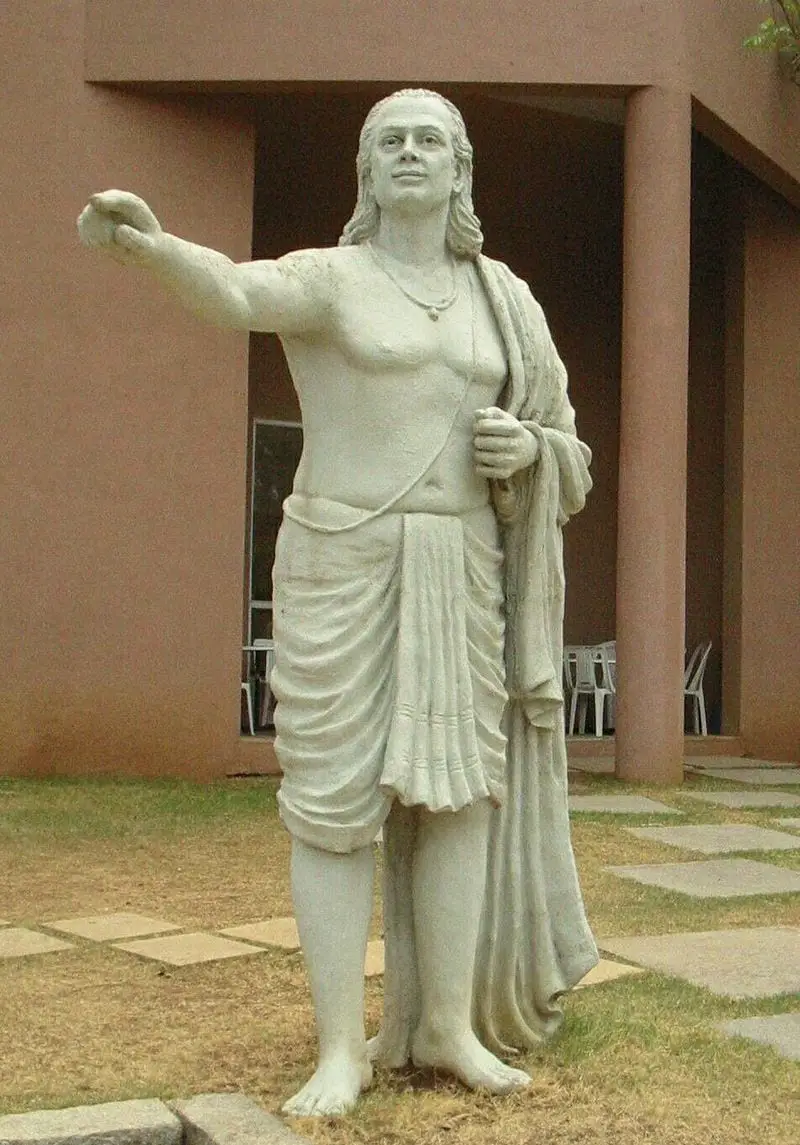
The very first one on the list of Ancient Indian scientists and their inventions is the father of Indian astronomy i.e Aryabhatta. As far as the name “Aryabhatta” is concerned, for the western world, Aryabhatta is the name of the Indian satellite.
Well, in reality; Aryabhatta was the 5th-century CE Mathematician, Physicist, Astrologer, and Astronomer from the classical age of Indian mathematics and Astronomy. He was the native of Kusumapura or Pataliputra (modern-day Patna, Bihar, India).
Not to mention, as per the records, the concept of the mathematical digit “ZERO” was born in India by the greatest Indian Mathematician Aryabhatta. In his book Aryabhatiya (which he wrote when he was just 23 years old) he explains zero, as he writes,
sthānāt sthānaṁ daśaguṇaṁ syāt
which means from place to place each is ten times the preceding. In fact, he also calculated the numerical value of Pi (π) up to four decimal places. Hence, declared Pi (π) as an Irrational Number, centuries before the Swiss polymath Johann Heinrich Lambert, who according to the western world first explained the irrationality of Pi (π) in the year 1761.
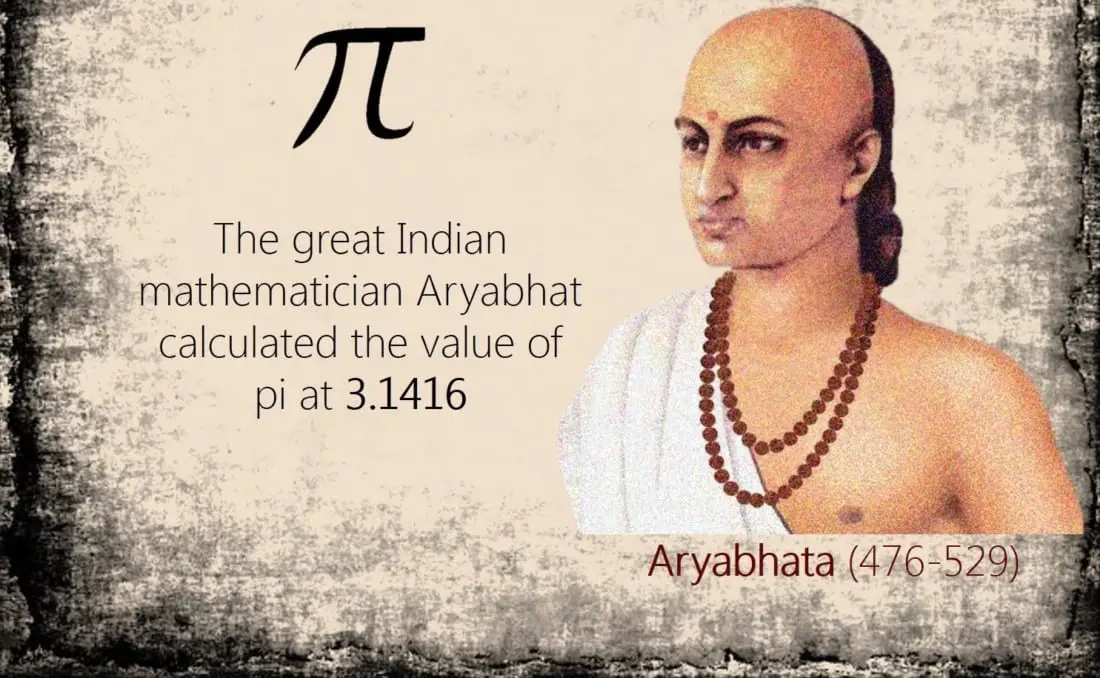
As Aryabhatta explained the irrational Pi (π) in his book Aryabhatiya as he writes,
caturadhikaṃ śatamaṣṭaguṇaṃ dvāṣaṣṭistathā sahasrāṇāmayutadvayaviṣkambhasyāsanno vṛttapariṇāhaḥ
In the English language, it means, “add 4 to 100, multiply by 8, and then add 62,000. By utilizing this rule, the circumference of a circle with the diameter of 20,000 can be approached”.
Aryabhatta Discoveries in the field of astronomy
Aryabhata is also considered the “Father Of Astronomy”. In ancient India, astronomy was known as the AudAyaka system. Well, centuries before Nicolas Copernicus, Aryabhatta advocated the Heliocentric Model Of The Solar System. He, in fact, rejected the orthodox geocentric view that earth is “Achala” i.e immovable.
He held the notion that the earth revolves around the sun and rotates about its axis daily making day and night. In the 15th century, his concept of the Heliocentric Model Of The Solar System was later revised by an Indian Astronomer Nilakantha Somayaji in his Geo-Heliocentric Model.
Aryabhatta model later became the motivation for Tycho Brahe’s Geo-Helio Centric Model, which later paved the way for the Copernicus model and Kepler’s Law Of Planetary Motion.
If you don’t know, the Aryabhatta Model Of The Universe and Vedic cosmology comes in the list of Top 6 Obsolete cosmological Models Of The Universe.
Maharishi Kanada – Father Of Atomic Theory
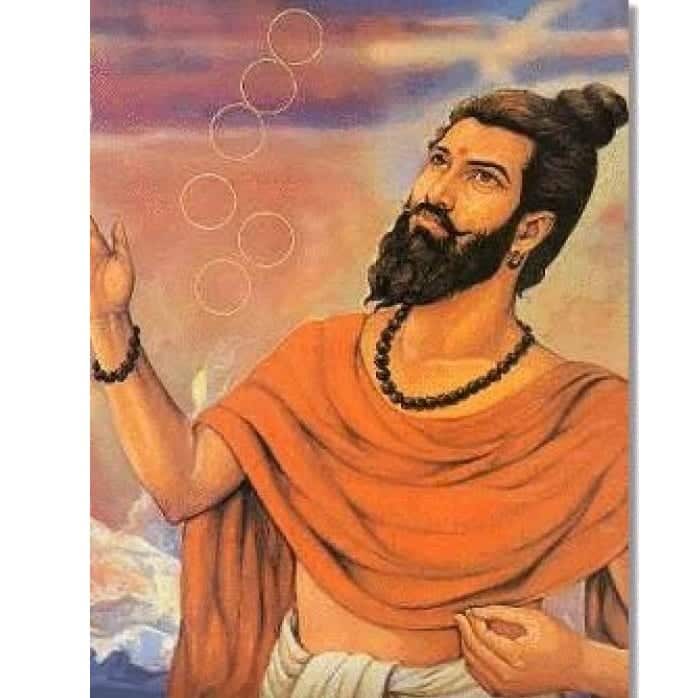
The next one on the list of Ancient Indian scientists and their discoveries is Maharishi Kanada and his Kanada atomic theory. According to the modern terminology, an English physicist John Dalton is credited for the invention of Atomic Theory.
Even if we go more back in the historical timeline; a greek pre-socratic philosopher Democritus (c 460 – c 370 BC) is regarded as the first individual for the formulation of the Atomic Theory.
However, none of them was the first one to discover the concept of the atom. Acharya Kanad of Ancient India was the first person in the world to discover the concept of an atom (Anu).
Therefore, one can say that Dalton and Democritus had re-discovered what Maharishi Kanada discovered long before them.
Acharya Kanad was an ancient Indian physicist, sage, and philosopher who was far ahead of his time. Moreover, he was also known by different names such as Kashyapa, Uluka, Kananda, and Kanabhuk, etc. There is no correct data available for the time of birth and place.
He was estimated to live somewhere between the 6th century to 2nd century BCE. He was the founder of the Vaisheshika school of Indian philosophy.
Kanada Atomic Theory
Kanad, in order to explain the creation and existence of the universe; proposed his atomic theory stating that everything in this universe is made up of an atom (Anu) that cannot be further divided i.e eternal.
On the other hand, he held the notion that an atom or Anu can be divided into two states of motion i.e absolute rest and a state of motion.
In his book Vaisheshika Sutra or Kanada Sutra, he explained how an atom of the same substance can be combined with each other to form Dvyanuka i.e Dia-atomic molecules or Tryanuka i.e tri-atomic molecules.
As a matter of fact, the only difference between Kanada Atomic Theory and Modern Western Atomic Theory is that; in the concept Acharya Kannad, an atom as a building block can be differentiated from one another by both qualitatively as well as quantitatively.
On the other hand; in the concept of daltons or Democritus atomic theory, an atom as a building block can only be differentiated by one another by quantitatively.
Maharishi Kanada was a critical thinker. Whatever he observed, he used to think in terms of existence and creation. We can’t talk about all of his works in this article. But some to mention are the falling of stone, rising of fire, the growing of grass, etc.
Sage Sushruta – Founding Father Of Plastic Surgery
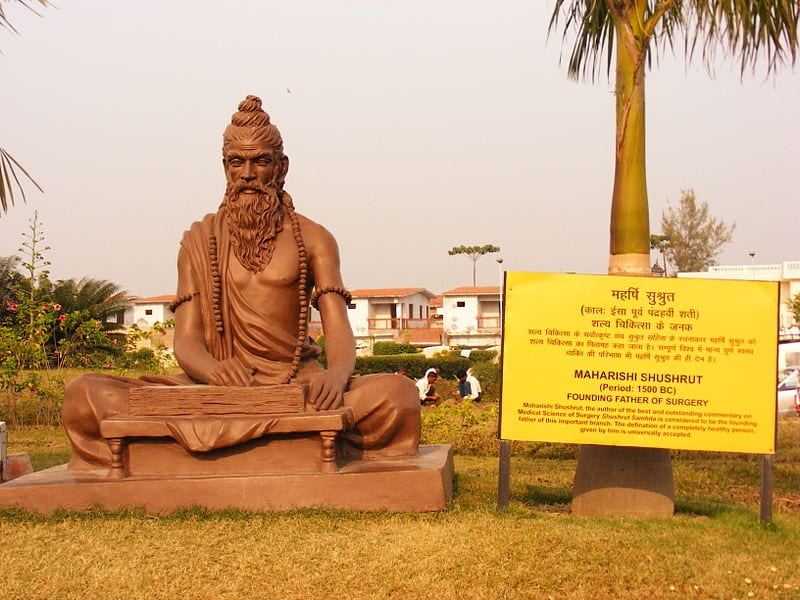
The next one in the list of Ancient Indian scientists and their inventions is Sage Sushruta and his inventions of surgery. Sage Sushruta was a great physician in ancient India. Therefore, considered as the Father of Indian Medicine and the founding Father of Plastic Surgery.
The actual date of his birthplace is unknown. Simply because Indian Civilization is one of the oldest civilizations in the world timeline. His period is placed somewhere between 1200 BC -600 BC.
According to the Indian mythology Mahabharatha, Sage Sushruta is considered as the son of Sage Vishvamitra. Bower Manuscript is the earliest known script where Sage Sushruta’s name was found. In that book, Sage Sushruta is listed as one of the Ten Sages Residing In The Himalayas.
Sushruta Samhita
Sage Sushruta was a pioneer in the field of surgery. According to Indian mythology, Sushruta learned the art of surgery from the Hindu god of medicine i.e Lord Dhanvantari.
He authored a book named Sushruta Samhita written in the Sanskrit language; which is considered the oldest book to date, where the correct description of different types of surgery is written.
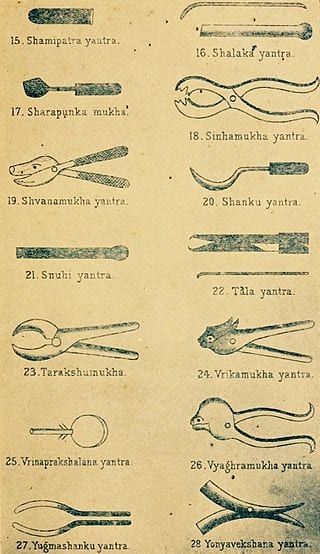
He is considered one of the first people to perform different kinds of surgery such as cataract surgery, cosmetic surgery, or even plastic surgery.
In his book, Sushruta Samhita; there are around 1100 diseases with their cure and types of instruments used for curing the disease.
Sushruta Samhita is considered as one of the foundational books of Ayurveda (Indian traditional medicine). Later, in the early 8th century, Sage Sushruta’s book was translated into the Arabic language as Kitab Shah Shun al-Hindi or alternatively as Kitab-i-Susurud. And, then from the Arabic world, Sushruta Samhita was later translated and transferred to the Western World.
Bhaskaracharya – The Concept Of Gravity
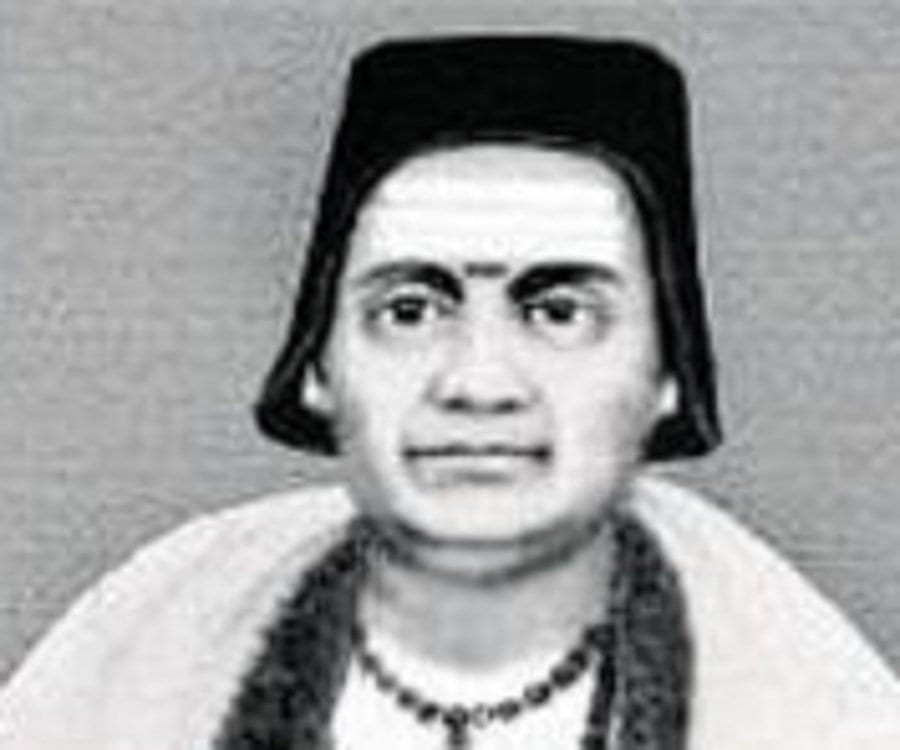
The next one in the list of Ancient Scientists of India and their discoveries is Bhaskaracharya and his concept of gravity. Here we go all over again. According to the modern scientific world, Issac Newton was the first individual to devise a correct model for the Law Of Gravity.
But in actuality, a 12 century born, Indian mathematician and Astronomer Bhaskaracharya or Bhaskara II should be credited for the formulation of laws of gravity. Bhaskaracharya was born in Bijapur, Karnataka. Bhaskaracharya extended the work of Brahmagupta in his book “Siddantha Shiromani”.
His treatise can be bifurcated into four parts: Lilāvatī i.e (Arithmetic), Bījagaṇita i.e (Algebra), Golādhyāya i.e (Sphere), and Grahagaṇita i.e (Mathematics Of Planets).
In the fourth part of “Siddantha Shiromani” i.e in Grahagaṇita (mathematics of planets); Bhaskara explained the force of gravity. As he states
Objects fall on earth due to a force of attraction by the earth. Therefore, the earth, planets, constellations, moon, and sun are held in orbit due to this attraction
Bhaskara also discovered the basic principles of Differential Calculus and Integral Calculus; for which Issac Newton and Gottfried Leibniz is been credited by the modern western world.
As a matter of fact, Bhaskara’s treatise “Siddantha Shiromani” predates Issac Newton as well as Gottfried Leibniz’s work by almost half a millennium. Therefore, just by logical thinking, you can assess that who in actuality is the founder of gravity…!!!
Maharishi Patanjali – The Father Of Yoga
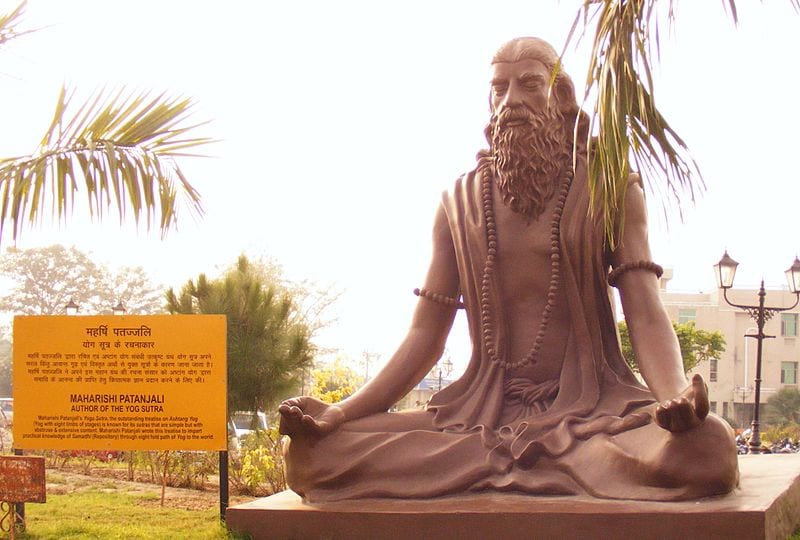
The very last one in the list of Ancient Indian scientists and their inventions is Maharishi Patanjali and his Yoga Sutras. Again, the time, place, and origin of Sage Patanjali are unknown. And, you know the obvious reason behind it.
Some scholars suggest that Maharishi Patanjali had lived between the 5th century BCE to 4th century CE. On the other hand, some suggest that he had lived somewhere between the 2nd century CE to the 4th century CE.
But, for surety, we know that he is the father of yoga i.e a compiler of 195 yoga sutras. The term Yoga is derived from the Sanskrit word Yoktra. Yoktra means yoking the mind to the inner self after detaching it from the outer world.
According to Patanjali’s treatise of Yoga sūtras, Yoga can be Physical as well as Mental. Meaning, Physical Yoga is called Hathyoga, and Mental Yoga is called Rajayoga.
Maharishi Patanjali referred AUM as the symbol of God himself as a Cosmic Sound. The treatise of Patanjali was most spread in the medieval era by translating it into different 40 languages across the border of Ancient India. Other than Yoga Sutra, Patanjali also authored a book on medicines called Patanjalatantra.
Thank god, to date, none of the western nations takes the credit for discovering yoga. Well, who knows? I mean, maybe after a century or two, they would even claim that they had discovered yoga, in a similar way, they claim all the above mentioned ancient Indian discoveries made by the ancient Indian scientists as their own.
That’s it for this post. If you like this article, share it if you like it, like it if you share it. You can also find us on Mix, Twitter, Pinterest, and Facebook.
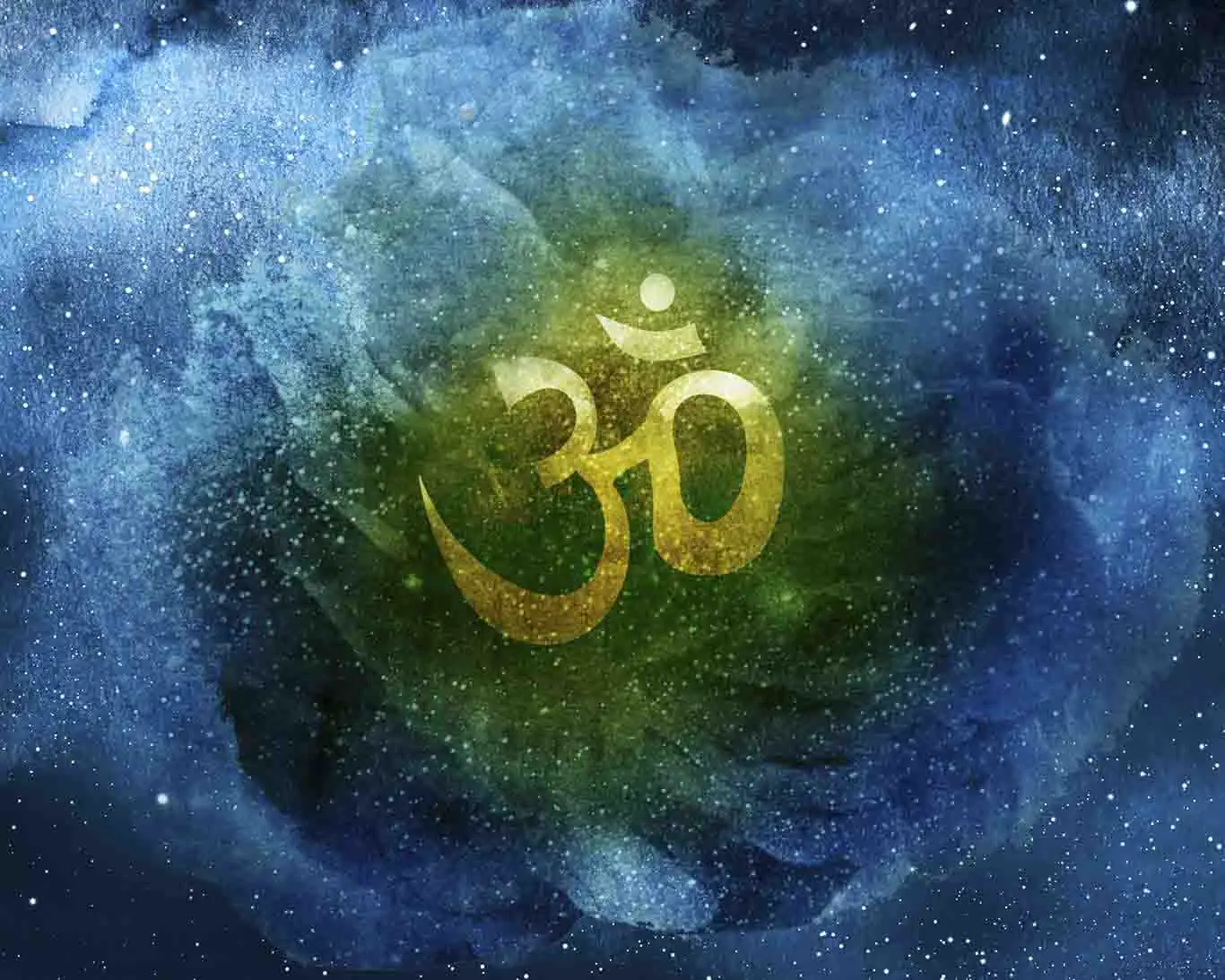
So true, respect
Thank you. Keep visiting us!!!